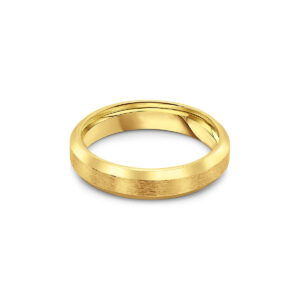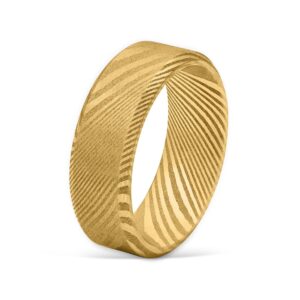When it comes to wedding rings, the question of which hand to wear it on is one that holds both cultural and personal significance. The tradition of wearing a wedding ring on a specific hand has deep historical roots and varies across different cultures and countries. While the hand on which the wedding ring is worn is often seen as a symbolic gesture of love, commitment, and unity, understanding the various customs and traditions can help individuals make informed decisions about what is most appropriate for them.
In many Western cultures, the tradition of wearing a wedding ring on the left hand is deeply ingrained. This custom stems from ancient Roman beliefs, where it was believed that a vein, known as the “vena amoris” or “vein of love,” ran directly from the left fourth finger (the “ring finger”) to the heart. Although modern science has disproven this idea, the symbolism behind it persists, and the left hand remains the most common choice for wearing a wedding ring in countries such as the United States, Canada, the United Kingdom, and much of Europe. The left hand, particularly the fourth finger, is viewed as the most romantic and significant hand to symbolize eternal love and marital commitment.
-
Titanium Steel Brushed Yellow Gold Wedding Band$59.95
-
Matte Pattern Yellow Gold Damascus Steel Wedding Ring$99.95
-
Silver Matte Pattern Damascus Steel Wedding Ring$99.95
-
Crystal Leaf Ring-Leaf Wedding Band$99.95
-
Gold Round Cut Solitaire With Wedding Band$99.95
-
Rose Gold Round Cut With Wedding Ring$59.95
-
Triple Band Wedding Ring With Oval Cut$99.95
-
Gold Three Band Ring Jewelry Splittable$124.95
-
Rose Gold Stackable Minimal Classic Wedding Ring Sets$64.95
However, not all countries follow this tradition. In some cultures, the wedding ring is worn on the right hand instead of the left. For example, in many Eastern European countries such as Russia, Poland, and Greece, the right hand is the preferred hand for wedding rings. The right hand is often seen as symbolizing strength and power, and wearing the wedding ring on this hand can indicate that the relationship is a strong and enduring partnership. Similarly, some countries in the Middle East and South America also favor the right hand for wedding rings, although the left hand is still the more common choice in many regions.
Religious traditions also influence which hand is chosen for wearing a wedding ring. In the Christian faith, the left hand is typically favored, particularly in the Roman Catholic and Protestant communities. The left hand is often associated with humility and submission, which may be why it has become the customary choice for wedding rings. In contrast, Orthodox Christians tend to wear their wedding rings on the right hand, a practice that is also seen in the Eastern Orthodox Church as a symbol of the spiritual and physical unity of marriage.
While these cultural and religious customs provide a guideline, personal preference often plays a significant role in the decision of which hand to wear a wedding ring. For some individuals, the choice of hand may not be influenced by any particular tradition or belief but rather by comfort and practicality. In some cases, individuals may have personal reasons for choosing one hand over the other, such as having a dominant hand that is more active in daily tasks. For example, someone who is left-handed may prefer to wear their wedding ring on the right hand to avoid interference with their dominant hand. Others may choose to wear the ring on a specific hand simply because it feels more comfortable or suits their lifestyle better.
In addition to tradition and personal preference, the type of wedding ring chosen can also affect which hand it is worn on. In some cultures, couples opt for a matching set of rings, with the wedding band worn on one hand and an engagement ring worn on the other. In this case, the wedding band is typically worn on the left hand, while the engagement ring is often worn on the same hand, sometimes on the opposite finger. This practice allows both rings to be worn together and is seen as a way to represent the couple’s commitment and the engagement leading up to the marriage.
Another factor to consider is the engagement ring’s role in the decision of where to wear the wedding ring. In many countries, the engagement ring is worn on the left hand before the wedding, and after the ceremony, the wedding ring is placed on the same finger. In some cases, individuals may choose to move the engagement ring to a different hand or finger after the wedding, either to keep both rings together or for personal reasons such as comfort or style. This flexibility allows for customization in how the rings are worn and ensures that individuals can find a solution that works best for them.
The significance of wearing a wedding ring on a specific hand is deeply personal and can hold different meanings for different people. Some may view the left hand as a symbol of love and commitment, while others may prefer the right hand for its association with strength and resilience. Ultimately, the choice of hand is a reflection of personal values, cultural background, and individual preferences. Whether on the left or right hand, the wedding ring serves as a powerful symbol of the bond between two people and the vows they have made to each other.
Moreover, the choice of hand can be influenced by modern trends and the evolving nature of wedding customs. In today’s society, many couples opt for unique, non-traditional ways of celebrating their love, and this extends to the choice of hand for the wedding ring. Some individuals may choose to wear their wedding rings on a different finger or hand altogether, embracing the idea of personal expression and individuality. This shift away from traditional norms allows couples to tailor their wedding practices to reflect their personal preferences and values.










